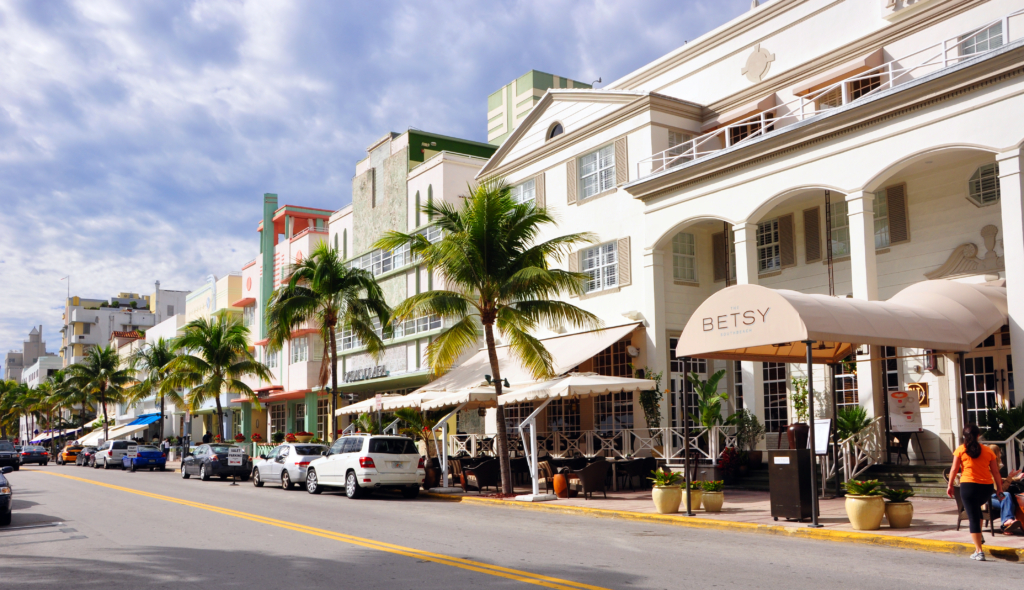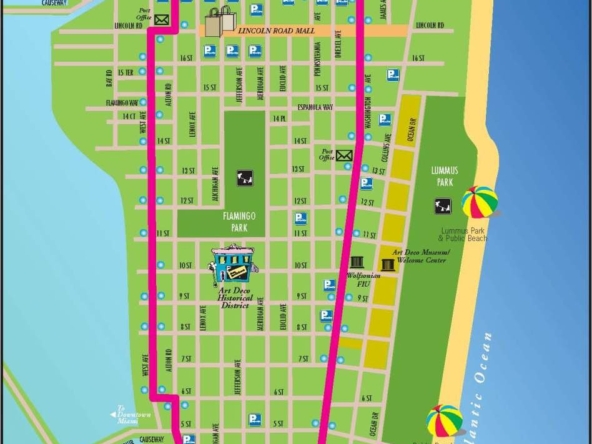n both daytime and at nightfall, the South Beach section of Miami Beach is a major entertainment destination with hundreds of nightclubs,restaurants, boutiques and hotels. The area is popular with both American and international tourists (mainly from Canada, Latin America,Europe, Israel, the Caribbean and within the United States), with some having permanent or second homes. The large number of Europeantourists also explains their influence on South Beach’s lax and overall tolerance of the female monokini, aka topless sunbathing, despite it being a public beach.
The reflection of South Beach’s residents is evident in the various European languages, as well as Semitic languages and many otherlanguages spoken. In 2000, 55% of residents of the city of Miami Beach spoke Spanish as a first language, while English was the first language for 33% of the population. Portuguese (mainly Brazilian Portuguese) was spoken by 3% of residents, while French (includingCanadian French) was spoken by 2%, German by 1.12%, Italian 0.99%, and Russian by 0.85% of the population. Owing to the area’s largeJewish and Israeli community, Yiddish was spoken by 0.81% of residents, and Hebrew by 0.74%.[11]
Another unique aesthetic attribute of South Beach is the presence of several colorful and unique stands used by South Beach’s lifeguards. After Hurricane Andrew, Architect William Lane donated his design services to the city and added new stops on design tours in the form of lifeguard towers. His towers instantly became symbols of the revived City of Miami Beach.





